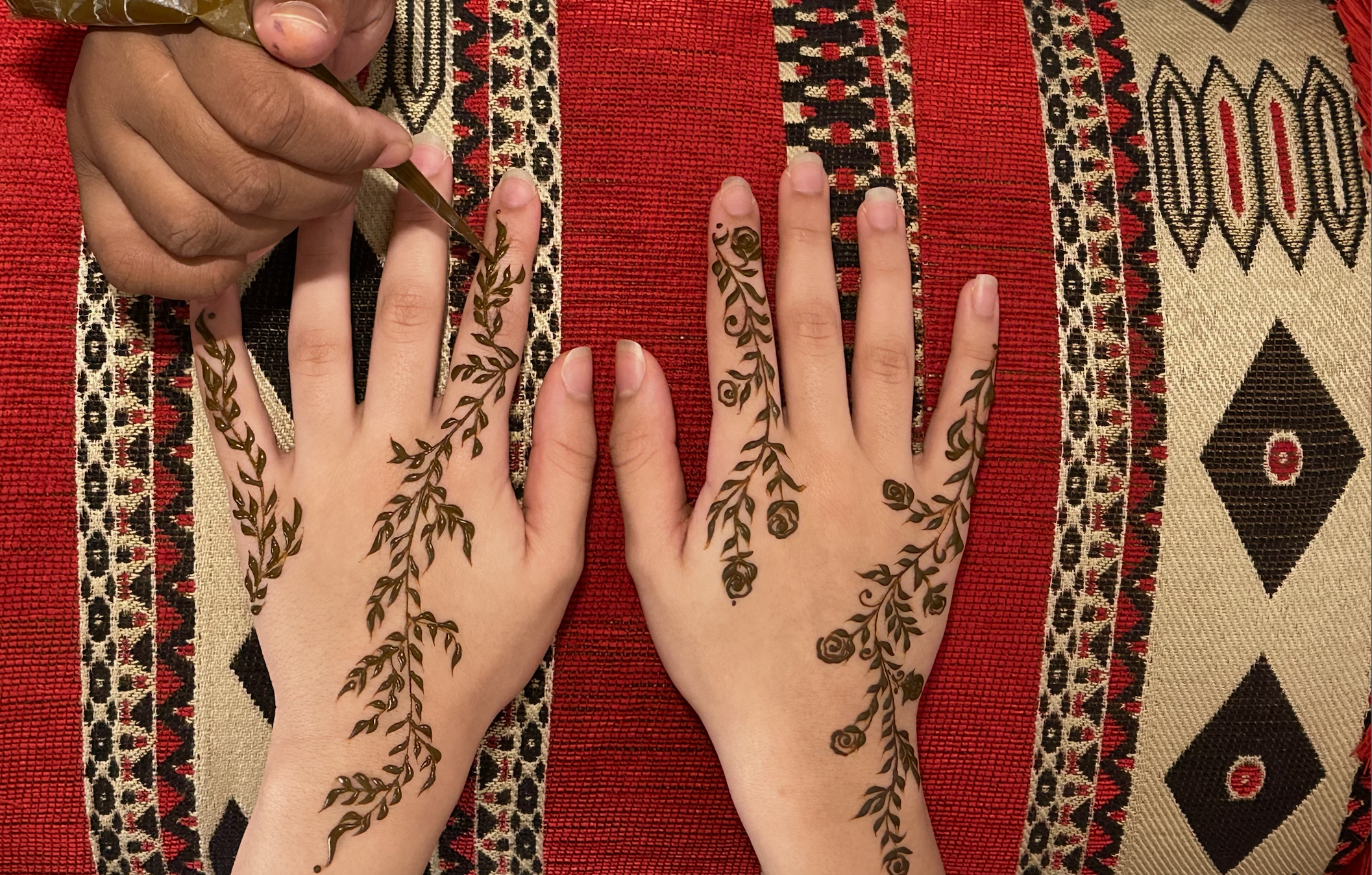The transformation of Eid henna designs in the Gulf region reflects the broader cultural shifts taking place in a rapidly globalising world.
The honoured tradition of henna body art, also known as mehndi, during the festival of Eid al-Fitr has seen a striking transformation in the region.
The younger generation, influenced by minimalist global trends and the power of social media, is opting for simpler, chic designs over the intricate patterns of yesteryears.
Henna, typically applied to the hands and feet, is an essential element in the cultural fabric of the Gulf and has always played a significant role in the celebration of Eid.
Doha News spoke to Thahani Fatima, a professional Henna artist from Sri Lanka who has witnessed the change in Henna trends over the years. Her work can be found here.
“Before, it was all about getting full hand designs earlier for Eid, like until the elbows, totally full, no flesh to be seen. But now my clients are more into very simple leafy designs with flowers,” she told Doha News.
“Only front designs, very simple, but very minimal, and very nice.”
Historically, women adorned their hands and feet with elaborate patterns, often depicting floral motifs, paisleys, and geometric shapes. These traditional designs not only showcased the artist’s skill but also symbolised a range of emotions and beliefs, such as protection, blessings, and prosperity.
While the new designs have gained popularity, many people continue to prefer the old ones.
“There are still some who stick to the old designs, which take a lot of effort but are beautiful,” said Tahani.
The recent changes can be attributed to the global trend of minimalism and the increasing influence of Western and Asian aesthetics.
Simple, clean lines and geometric shapes have become increasingly popular, as they create a chic and modern look. In some cases, the designs are even minimal enough to resemble tiny, delicate tattoos.
One of the critical factors contributing to this transition in henna artistry is the impact of social media. Platforms like Instagram and Pinterest have exposed the younger generation to a myriad of minimalist henna designs from around the world, often crafted by talented henna artists with vast followings.
The sharing of images and videos has made it easier than ever for the youth to adopt these new styles, which often embody a more modern, global aesthetic.
The shift towards simpler henna designs is also reflective of the changing lifestyles and values of the younger generation.
Many young people today prioritise convenience and practicality over complex, time-consuming traditions. Minimalist henna patterns take less time to apply, dry faster, and often fade more quickly, making them ideal for those who prefer a less commitment-heavy form of self-expression.







